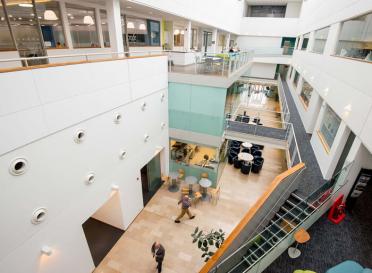
Life at Earlham Institute
We believe that our people are our greatest asset, and we want you to have the freedom to achieve your very best work here.
Blood clotting is an essential response to injury and is crucial for survival. Platelets are the cells responsible and need to be produced at an astonishing rate of 1 trillion cells per hour to maintain this function. Failure to do so can be life threatening and is a frequent issue in the elderly, cancer patients, and people with autoimmune diseases.
Unfortunately the mechanism of platelet production is poorly understood. To identify treatments for platelet shortages it is vital to first understand their production. Previous work in our group has shown that there are 2 stem cell types, one that produces a lot of platelets and the other only a small number.
This project will investigate the molecular differences between stem cells that produce high and low numbers of platelets. To achieve this the student will employ cutting-edge FACS cell isolation, single-cell RNA sequencing, lineage tracing, synthetic biology, and bioinformatic techniques established in the Wojtowicz and Haerty groups.
The project will be based in the Wojtowicz group, but will collaborate closely with the Haerty and Beraza (Quadram Institute) groups.
This will give you a strong and experienced supervisory team with expertise in single cell and computational methods.
Established collaborations with pharmaceutical companies will allow the student to translate their findings into industry. The student will have access to extensive training and career development opportunities at EI, QIB, and as part of the Norwich Biosciences Doctoral Training Partnership.
Further reading:
Application information:

Exploring the mechanisms regulating blood cell production using single-cell approaches.

We believe that our people are our greatest asset, and we want you to have the freedom to achieve your very best work here.

Norwich is a city of culture, with its rich history of art and writing, as well as a city of science - hosting some of the leading centres for life science research in the world.

The behaviours and communication skills we expect from candidates.